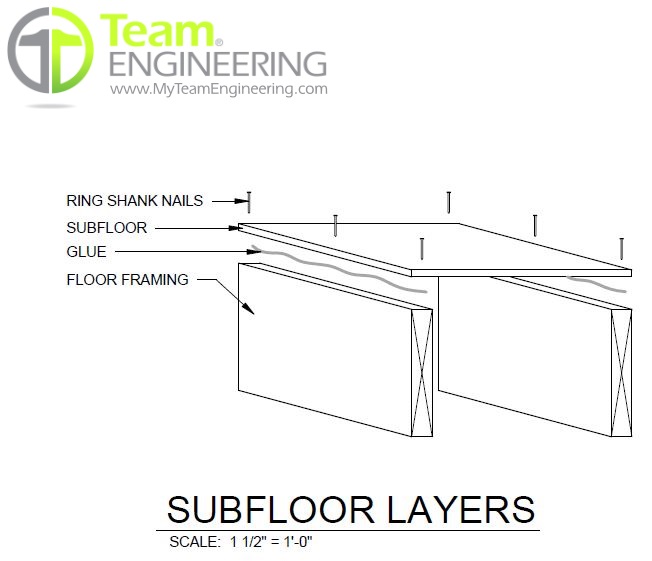
The Causes of Squeaky Floors
By Brian Ki, P.E.
Once you hear it for the first time, you’ll always hear it. What is it? It’s your squeaky floors!
Squeaky floors are caused by several factors, with most relating to friction, or the action of one surface rubbing against another. In the case of your home, your floor is constructed of several layers of materials that rely upon one another. If any of those components are loose, not properly attached, or have voids between them, any movement (such as people walking) will cause the layers to rub against each other and squeak.
In most scenarios, a squeaky floor starts with a proper base, i.e. the subfloor, and how its attached to the framing below it. With that in mind, here are the three common reasons that might play a role in causing your squeaky floor:
No Glue but Screws
To attach the subfloor to the main framing structure, the most common method is to “glue and screw.” This is a two-step process involving applying a line of glue on top of the floor framing and then nailing the plywood subfloor down. Ring shank nails are used that have outer threads like screws, which makes the rhyme sound better. If completed correctly, the entire subfloor is attached to the framing below; no voids or gaps.
In some cases, contractors skip the gluing process or sometimes the ring nails completely miss the floor framing below it. The spaces not fastened to each other can move, rub against each other and let out that annoying squeak.
Change of the Seasons
We live in New England and are familiar with the various weather patterns throughout the year. With the weather comes moist (spring/summer) and dry (winter) air. The moisture in the air can be absorbed or released by wooden floors causing them to expand or shrink.
When expanding, floor members may rub closer together and set off squeaks when people walk on the surface above. When shrinking, more voids and gaps will make themselves present and members are more vulnerable to vibrating and causing noises.
Structural Inadequacies
When a structural member begins to fail, it will bend, bow, lean and any other danger word you can imagine. In the process, it will jut loose any fasteners or members attached to it. In most cases, this will develop over a long period of time and you’ll begin to hear the squeaking effects of the voids and gaps created as your house cries out to you as a warning. If you think you are experiencing these types of squeaks, you may want to have a structural engineer investigate further. As you can imagine, these types of squeaks are heard most often in older homes and less likely in newer construction.
If you are having concerns about your squeaky floors, feel free to contact us today. We’d be happy to provide our expert opinion and lead you to the right path of repair.
More Articles From...
| This Category | Home Repairs, Residential Engineering, Structural Engineering |
| This Author | Brian Ki, P.E. |
